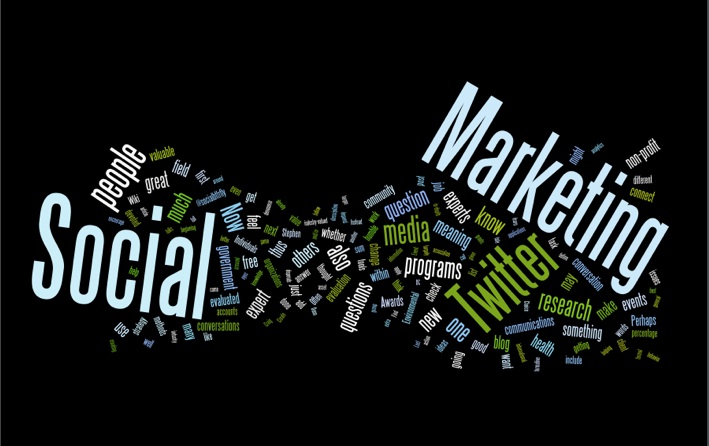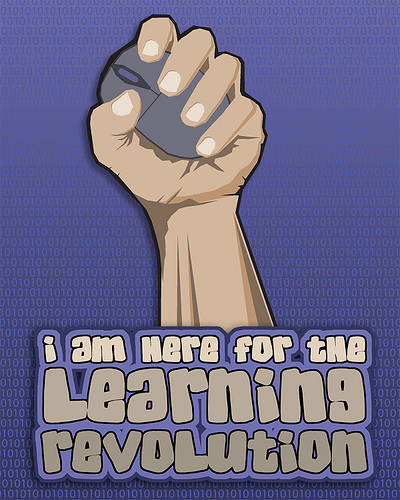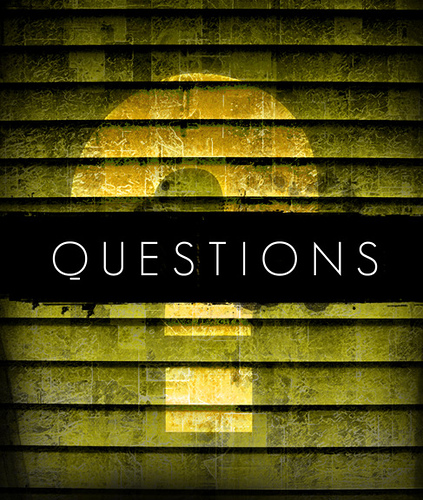 Joe, on the social marketing list serv, posed a great scenario the other week and has allowed me to share its results in a blog post, as I think many others will find the information helpful.
Joe, on the social marketing list serv, posed a great scenario the other week and has allowed me to share its results in a blog post, as I think many others will find the information helpful.
Joe posed the question that asked for research that shows why providing people with information does not change behavior alone…aka: how do you show the value of investing in social marketing?
The listserv showed its wisdom, value and use by its overwhelming response. The responses full of resources, tips and ideas are summarized below, thanks to Joe’s help.
Individual attribution to comments have been erased to protect the person’s privacy. Also, these comments are made by individuals and do not reflect the attitudes of the entire social marketing list serv or the author of this blog. But, it should provide some great food for thought and perhaps offer some ideas for effective social marketing. In no particular order…
Comments
1. Some people think information alone changes behaviors. Ask them this: Do most people in America know thateating less and being more active will lead to weight loss? Knowing that, we should all be thin, right, because we all know this
I have spent the last eight years using emotion to influence health related behaviors. Check out one project at this website that shows how emotions could be used to change health-related behaviors: www.touchingheartstouchingminds.com
All marketing research says that emotions drive behaviors, not logic and fact alone. There are hundreds of books you could suggest, but here’s a simple one: Marketing Straight to the Heart by Barry Fieg
2. I don’t know of any one definitive study, but the example I often use is smoking. Numerous studies show that ‘everyone’ or at least the vast majority know that smoking is harmful, so giving people the facts just
isn’t enough.
3. I’m sure you could find information to this effect on the WHO site under health promotion. I believe also that Green & Kreuter discuss this with the PRECEDE-PROCEED model.
4. I would recommend you take a look at the ways that Safe Routes to School has opted to address the challenge of getting more kids to be active by walking or biking to school. The most broad and brief description of our issue is that involves changing behaviors to combat childhood obesity and also teach safety. Together with bicycle advocacy in general we’ve found that it’s not just education, but also encouragement, enforcement and engineering. Programs that don’t have a good balance of the 4 e’s don’t seem to be effective. I’d be happy to give you more information if you find it appropriate.
5. To that I would add the same thought around drinking and driving. Not only do people know it’s bad and potentially very harmful, it is even against the law, yet people continue to engage in the behavior.
6. How about these:
Tobacco. For a decade we let people know that tobacco kills one out of three people. It wasn’t until we began increasing taxes (price), decreasing access for minors (place), making people smoke outside (ambiance), and providing quit lines (products) that we saw significant decrease (about 50% decrease since 1964).
Seatbelts. Letting people know that “we love you so buckle up” only got about half of us to do it. It took primary seatbelt laws, increased fines, more comfortable seatbelts, “ding ding ding” sounds as reminders.
Recycling. Look at the low rates of recycling before we began providing containers (products) and streetside pickup (place) and in come communities fines for putting recyclables into garbage cans (price).
Organ Donation: We would not have the numbers of organ donors (although still not what we need) if we didn’t have sign up when getting/renewing our drivers license (Place).
Voting: Oregon has the highest voting rates in the country because they have the (only) vote-by-mail (place).
7. Here are a couple of other sources from the public health field:
http://www.collegedrinkingprevention.gov/NIAAACollegeMaterials/TaskForce/CallToAction_02.aspx#CallToAction_02_d
This one talks about ineffective strategies related to college students and alcohol.
You could also check: http://www.thecommunityguide.org/index.html I believe that they probably have some statements in their reviews about the ineffectiveness of straight education efforts.
8. Ok, here’s the grand daddy: What customers Think by Gerald Zaltman of Harvard School of Business. A painful book to read, but it is loaded with tons of research studies documenting that feelings are more important than facts. Don’t buy the book–it’s not one you’ll love to read. It’s in almost every library. Other (less painful) options: The Marketing Power of Emotion by John and Nicholas O’Shaughnessy by Oxford press. Body of Truth: Leveraging what consumers can’t or won’t say by Dan Hill. Who am I: The 16 Basic desires that motivate our actions and define our personalities by Steven Reiss of Ohio State. I’ve attached an article by him for a quick start.
9. I find it also helps to provide an example of when communication alone does work so they can see the difference in the factors that influence behavior. The example I like is SIDS. When we communicated that all you need to do is put your child to sleep on his back, the behavior change was readily adopted. But how hard is it to do that behavior. It doesn’t require any special equipment or special/skilled knowledge or special kind of person to do the action. Unless there is a cultural taboo against sleeping on one’s back, then this was easy to get people to do with communication alone. Not to mention that the potential outcome was highly prized and the opposite behavior could lead to catastrophic outcomes. So it was east to cut through the clutter, be heard, and be motivated — all pretty much with just communication. Then I show them Nancy Lee’s examples and point out why communication alone didn’t change behavior initially.
10. The challenge in finding research is this is one of those “it depends” issues. In some cases, such as when there is a severe threat and an easy-to-perform action, information IS enough to change the behavior of many — two examples I recall are putting babies on their back to sleep to avoid Sudden Infant Death Syndrome and not giving children aspirin to avoid Reye’s Syndrome.
However, in many other cases, information alone isn’t. Mike Rothschild’s “Carrots, Sticks and Promises” article may either be what you need or point you to it — especially the discussion of the Motive, Opportunity, Ability framework (e.g., for info alone to work, one must have the motivation, opportunity and ability to make the change). You can find it here: http://www.social-marketing.org/papers/carrotarticle.pdf
This is old, but the proceedings from a USDA-sponsored evaluation conference meet the “easy, understandable language” criterion and may help you; a focus of the conference was the situations in which nutrition education “works” and some of the speakers make the points you are probably
trying to find documented: http://www.nal.usda.gov/foodstamp/FOODSTAMPREPORTS/FSP-37.PDF Isobel
Contento’s session should reference a published lit review that draws some of the same conclusions. It’s been a long time since I’ve looked at this document, but some of the discussion was around the many situations in which the Knowledge-attitude-behavior paradigm just doesn’t work, and the need to also address the environment in which the behavior is taking place.
11. The example I use when presenting is to ask people to raise their hands if they know that eating right and getting regular exercise are important for good health (almost all hands go up). Then I ask how many people in the room actually do eat right and get enough exercise (half or so will raise their hands).
12. I think CSAP’s (SAMHSA’s Center for the Application of Prevention Technology) environmental approach to alcohol abuse, misuse and underage drinking prevention may offer support for your argument. There is little doubt that a comprehensive approach to substance abuse prevention is the most effective means to see positive results. CSAP basically suggests besides information dissemination and education, policy change and alternatives are necessary for success. http://www.captus.org/Western/resources/bp/step6/bpcsap.cfm Another organization, PIRE, (Pacific Institute for Research Evaluation) provides more than adequate data to support the necessary inclusion of policy change to reduce DUI’s and underage drinking. You can find that data on their site. http://www.pire.org/index.asp I’ve believed that the three legged stool metaphor is appropriate for alcohol misuse prevention. Information dissemination, alternatives and policy change are the legs that support behavioral change. Many would argue that addressing individual factors included in the universal, school, family and peer environments also need to be addressed and I would have a difficult time arguing with that. The bottom line is comprehensive approaches are best. I hope this helps.
13. You might want to look at the accessible work of Larry Green, who developed the PRECEDE-PROCEED models for (health) behavior change. His web site http://www.lgreen.net/precede.htm notes that there some 960 published studies that apply this model and he includes a link to a bibliography. There is also the body of work by Martin Fishbein at UPenn. His two key contributions to behavior change research: the Theory of Reasoned Action and Expectancy-Value Theory might bolster your (correct) assertion that it takes more than information to change behavior. You need to understand the larger context of how people perceive and value the information, and how attitude plays a major role. Wikipedia has accessible explanations of this scientifically rigorous work. Hope this helps. Web sites of other government agencies, such as the National Cancer Institute, may help. They have huge programs studying how to optimize communication (they don’t refer to it as social marketing, but that’s what it is) in order to produce behavior change. NCI’s Pink Book (aka Making Health Communication Programs Work) is a concrete example of what another gov’t agency is doing in this arena.
14. While in my graduate program in public health we learned that effective programs must include components of Knowledge Attitude and behavior change. Please check out the following resource on tools for Behavior Change Communication: http://www.infoforhealth.org/inforeports/BCCtools/2.shtml Under the section labeled “Understand Audience and other Potential Participants..” Collect in depth information about the audience: What are their knowledge attitudes and beliefs about health? To further support your argument you can also refer to the basic rules of evaluation… Establishing program objectives and deciding the particular evidence (such as the specific knowledge, attitudes, or behavior) that will demonstrate that the objectives have been met. A key to successful evaluation is a set of clear, measurable, and realistic program objectives. If objectives are unrealistically optimistic or are not measurable, the program may not be able to demonstrate that it has been successful even if it has done a good job. http://www.evaluationwiki.org/index.php/Evaluation_Definition I hope this is of help to you.
Still with us?? =)
15. Check out the US Forest Service’s research station. An excellent contact there is Pat Winter, PhD, a USFS employee who conducts research that may relate to your mission as well. At least, you can show that federal agencies understand the value of social marketing and are active in defining how it can be used to meet their goals.
16. I hope this helps. This article tells of a specific program that helps in drinking and driving in a Texas City. I have not analyzed the methods, but sounds very interesting. Also the Dept of Texas funds a drinking and driving program for young adults. The program is run by an Sherry Matthews Advocacy Agency in Austin, if you need more info let me know. The website is: http://whosdrivingtonight.com/
17. You can try searching this reference-see below for a brief summary (Redman, Spencer and Sanson-Fisher, 1990) though it’s a bit outdated, it might give you a bit of a start. This was taken from page 10 of The Health Communication Unit’s resource booklet on communication campaigns.
http://www.thcu.ca/infoandresources/publications/OHCMasterWorkbookv3.2.mar26.07.pd
When applied on their own-without complementary strategies such as community mobilization-the ability of some health communication campaigns to effect change is limited. In particular, a large body of evidence suggests that health communication campaigns relying exclusively on media appeals are not a sufficient means of changing attitudes and behaviour. In some contrast to the meta analysis found on this page, recent review of 24 published evaluations of health promotion programs revealed that media alone interventions had little impact on behaviour (Redman, Spencer and Sanson-Fisher, 1990).
18. Of course, the answer is (as it always seems to be when you look closely), “it depends.” On the behavior in question, that is. A very good scientific discussion of the if/thens is provided in Leslie Snyder’s meta-analysis. The reference is: Snyder LB. J Nutr Educ Behav. Health communication campaigns and their impact on behavior. 2007 Mar-Apr;39(2 Suppl):S32-40.
19. I think this might help you out a bit…(abstract) This paper proposes that stigma in relation to people with mental illness can be understood as a combination of problems of knowledge (ignorance), attitudes (prejudice) and behaviour (discrimination). From a literature review, a series of candidate interventions are identified which may be effective in reducing stigmatisiation and discrimination at the following levels: individuals with mental illness and their family members; the workplace; and local, national and international. The strongest evidence for effective interventions at present is for (i) direct social contact with people with mental illness at the individual level, and (ii) social marketing at the population level. http://www.ijmhs.com/content/2/1/3
20. This is an issue I deal with all the time and there’s tons of research to the contrary. Most behaviour change theories use some variant of the motivation, opportunity, ability model where knowledge is just one aspect of ability. If there’s no opportunity to behave or motivation to behave knowledge alone won’t work. Here’s one reference: Keller, Kevin Lane. “Memory Retrieval Factors and Advertising Effectiveness.” In Advertising Exposure, Memory and Choice, edited by Andrew A. Mitchell. New Jersey; Lawrence Erlbaum Associates, Inc., 1993. If you’d like more please let me know. In an ideal world I’d suggest doing a KAPB survey and asking the same questions of those who already do what you want and those who don’t.
Ask a bunch of knowledge questions as well as other motivation, opportunity and ability questions. If the knowledge levels of those who behave and those who don’t behave are the same it’s clearly not the key thing driving behaviour and sadly this data is often necessary to finally convince people not to focus on knowledge.
21. Perhaps the point is not so much providing evidence to this person(there is lots of that), but acknowledging that they do have a point and then showing them evidence that while info alone can bring about change, enhancing the info/facilitating/etc etc can bring about greater change & faster. The fact is that many people do change their behavior on the basis of information alone. The Sloan-Kettering report on cancer & tobacco tar in 1953 and the 1964 Surgeon-General’s report on smoking were both followed by declines in smoking rates without any campaigns or other measures. However smoking rates began (and continued) to decline significantly when advertising campaigns dramatized & personalized the information. (Of course not all behaviours are the same — nor are all people – and that is another point).
Hope this helps! =)
 At SB, I’ve noticed a spike in new visitors this summer who might be wondering, “What is SocialButterfly all about?” Well, I’ve been evaluating that myself, and encouraged by a few colleagues of mine, I believe it’s time for an update. As we go forward, you’ll see me working to align my work, content and chatter around this working vision: Make SocialButterfly a resource for information and dialogue on social change, social marketing and social media.
At SB, I’ve noticed a spike in new visitors this summer who might be wondering, “What is SocialButterfly all about?” Well, I’ve been evaluating that myself, and encouraged by a few colleagues of mine, I believe it’s time for an update. As we go forward, you’ll see me working to align my work, content and chatter around this working vision: Make SocialButterfly a resource for information and dialogue on social change, social marketing and social media.










